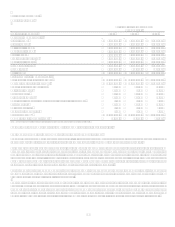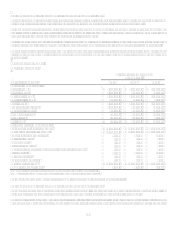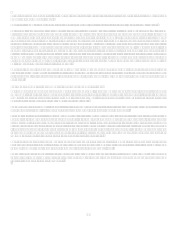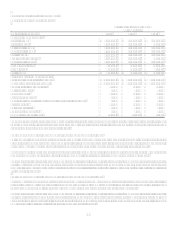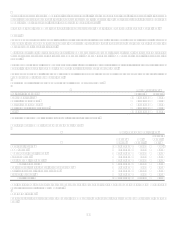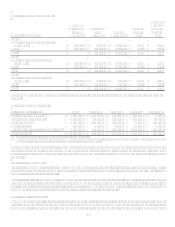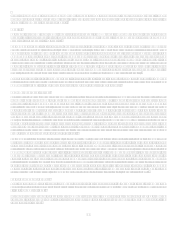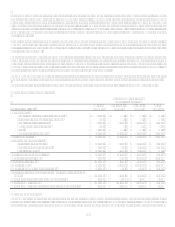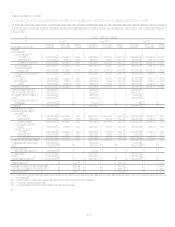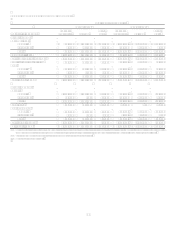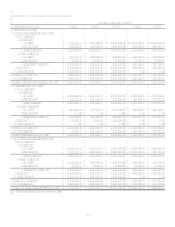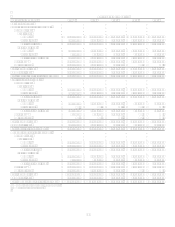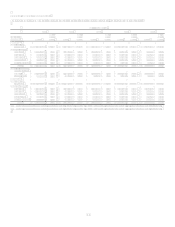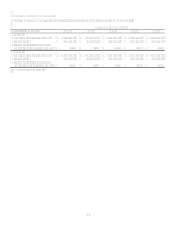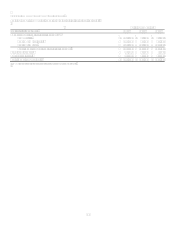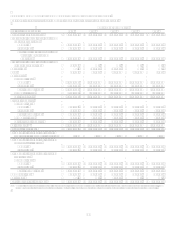Capital One 2007 Annual Report Download - page 73
Download and view the complete annual report
Please find page 73 of the 2007 Capital One annual report below. You can navigate through the pages in the report by either clicking on the pages listed below, or by using the keyword search tool below to find specific information within the annual report.51
month earnings due to adverse foreign exchange rate movements corresponding to a 95% probability is less than 1%. The precision of
this estimate is also limited due to the inherent uncertainty of the underlying forecast assumptions.
IX. Capital
Capital Adequacy
The Company and COB are subject to capital adequacy guidance adopted by the Federal Reserve Board (the Federal Reserve), and
CONA and Superior are subject to capital adequacy guidelines adopted by the Office of the Comptroller of the Currency (the OCC,
and with the Federal Reserve, collectively, the regulators). The capital adequacy guidelines set minimum risk-based and leverage
capital requirements that are based on quantitative and qualitative measures of their assets and off-balance sheet items. The Federal
Reserve holds the Corporation to similar minimum capital requirements. Failure to meet minimum capital requirements can result in
possible additional, mandatory discretionary actions by a federal banking agency that, if undertaken, could have a material adverse
effect on the Corporations consolidated financial statements.
As of December 31, 2007, COB, CONA, and Superior (collectively, the Banks) each exceeded the minimum regulatory
requirements to which it was subject. The Banks all were considered well-capitalized under applicable capital adequacy guidelines.
Also as of December 31, 2007, the Corporation was considered well-capitalized under Federal Reserve capital standards for bank
holding companies and, therefore, exceeded all minimum capital requirements. There have been no conditions or events since that we
believe would have changed the capital category of the Corporation or any of the Banks.
COB treats a portion of its loans as subprime under the Guidelines issued by the four federal banking agencies that comprise the
Federal Financial Institutions Examination Council (FFIEC), and have assessed its capital and allowance for loan and lease losses
accordingly. Under the Guidelines, COB exceeds the minimum capital adequacy guidelines as of December 31, 2007.
For purposes of the Guidelines, the Corporation has treated as subprime all loans in COBs targeted subprime programs to
customers either with a FICO score of 660 or below or with no FICO score. COB holds on average 200% of the total risk-based
capital charge that would otherwise apply to such assets. This results in higher levels of regulatory capital at COB.
Additionally, regulatory restrictions exist that limit the ability of COB, CONA, and Superior to transfer funds to the Corporation. As
of December 31, 2007, retained earnings of COB, CONA, and Superior of $539.9 million, zero million, and $5.0 million, respectively,
were available for payment of dividends to the Corporation without prior approval by the regulators.
Dividend Policy
The declaration and payment of dividends, as well as the amount thereof, are subject to the discretion of the Board of Directors of the
Company and will depend upon our results of operations, financial condition, cash requirements, future prospects and other factors
deemed relevant by the Board of Directors. As a holding company, our ability to pay dividends is dependent upon the receipt of
dividends or other payments from our subsidiaries. Applicable banking regulations and provisions that may be contained in our
borrowing agreements or the borrowing agreements of our subsidiaries may limit our subsidiaries ability to pay dividends to us or our
ability to pay dividends to our stockholders. There can be no assurance that the Company will declare and pay any dividends.


